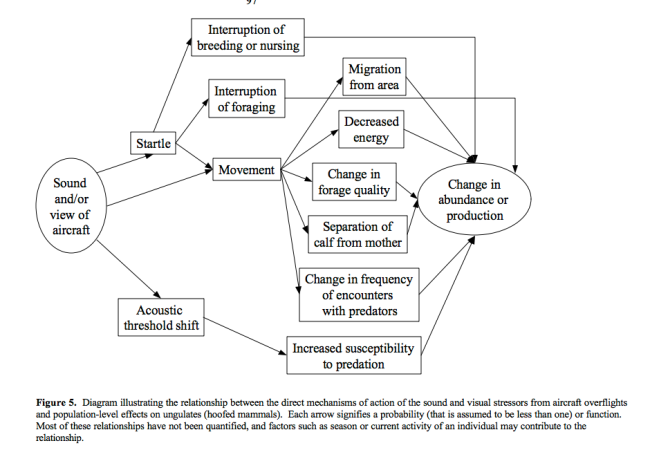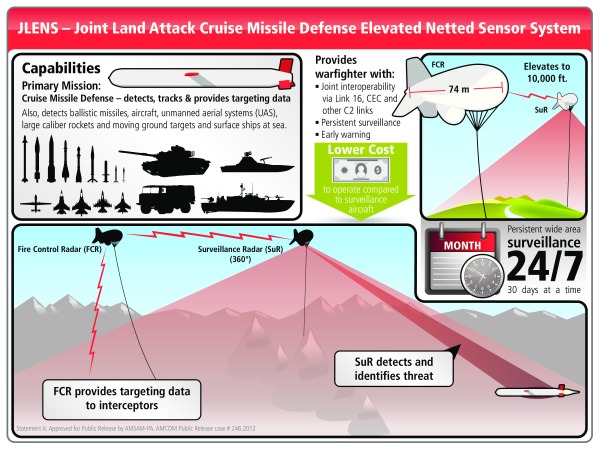
Photograph Courtesy of Alexdi
While studies have yet to show the environmental impact of JLENS on the region (perhaps this will be incorporated into the 3-year test at the Aberdeen Proving Ground beginning this September), Skywatchdc is able to draw some conclusions through our research.
Oak Ridge National Laboratory issued a report in 2000 focusing on the environmental impacts of military testing with fixed-wing aircraft. These aircraft are often cited as the primary means of surveillance and response in the DC region. The report, titled “ECOLOGICAL RISK ASSESSMENT FRAMEWORK FOR LOW ALTITUDE OVERFLIGHTS BY FIXED-WING AND ROTARY-WING MILITARY AIRCRAFT” examines specifically the impact that noise, erosion, and collisions have on ecosystems, including data from Aberdeen Proving Ground in Maryland.
More than 60% of the following bird populations in the study were significantly affected by low-altitude fixed-wing aircraft testing at a slant distance of closer than 400 meters:
- Red-tailed Hawk
- Osprey
- Mexican Spotted Owl
- Peregrine Falcon
- Bald Eagle
More than 60% of the following animal populations in the study were significantly affected by low-altitude fixed-wing aircraft testing at a slant distance of closer than 500 meters:
- Woodland Caribou
- Walrus
- Moose
- Harbor Seal
- Mountain Sheep
- California Sea Lion
- Pronghorn
Diagram From the ORNL Report Focusing on the Ecological Impacts of Low-Altitude Fixed-Wing Aircraft Testing on Ungulates (Hoofed Animals):
What Do We Know about JLENS and the Environment?
- Noise: JLENS makes very little noise, if any. It does not require speed to stay aloft, and is completely silent while at surveillance range. Minimal noise may occurs during takeoff and landing, but not at a decibel level anywhere close to fixed-wing aircraft and helicopters.
- Erosion: We don’t know yet how the mobile mooring may affect ground ecosystems, but we do know that it is significantly smaller than a landing strip for fixed-wing aircraft. Additionally, landing and takeoff create no wind (even with smaller landing areas, helicopters generate a significant amount of wind that disturbs the surrounding area).
- Collision: Bird collisions are both a danger to aircraft and to ecosystems. To a lesser extent, animal collisions on a runway are also a concern. JLENS is unmanned, eliminating any threat to human life. There are not yet studies on bird collisions with the aerostat or its tethers, but the risk of engines and turbines accompanied by tremendous noise is far more dangerous to birds.
- Additional Factor: JLENS does not use fossil fuels and only requires helium gas to stay aloft for 30 days at a time. Fixed-wing aircraft and helicopters contribute to air pollution.
It is safe to conclude that JLENS is more environmentally friendly than many other aircraft used for local surveillance and response. Areas of further research may include: effects on migratory birds (including tether line and surveillance altitude) and the effect of mobile mooring on land ecosystems.


